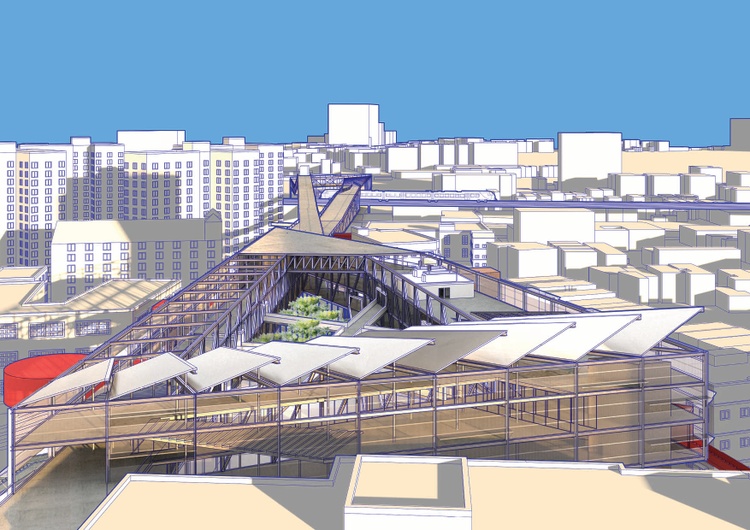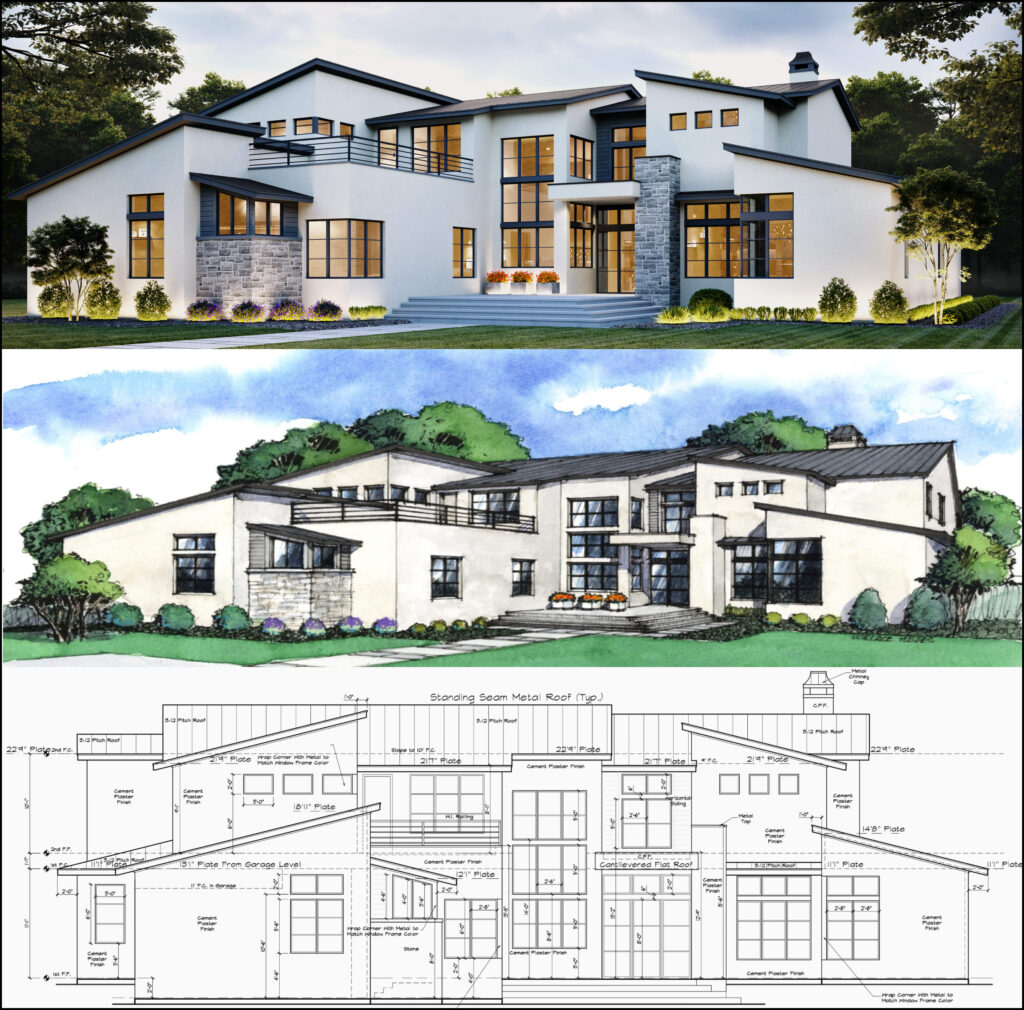How CDA Architects Incorporate Creative Thinking and Performance in Modern Design
How CDA Architects Incorporate Creative Thinking and Performance in Modern Design
Blog Article
A Comprehensive Summary of Building Styles and Their Influence on Modern City Planning and Advancement
Architectural designs have actually long offered as a mirror to the social values and technological advancements of their time, playing a crucial function fit contemporary city preparation and growth. From the grandeur of Neoclassicism to the utilitarian technique of Brutalism, each design has actually presented one-of-a-kind concepts that affect city aesthetics and performance. As contemporary difficulties arise, consisting of sustainability and community requirements, understanding these historic structures ends up being important. The resulting discussion not just educates future layout practices however also increases relevant inquiries concerning the balance between heritage and innovation in our evolving metropolitan landscapes.
Historic Summary of Building Styles

As cultures transitioned with the Middle Ages, Gothic architecture emerged, identified by its verticality and detailed outlining, mirroring the spiritual goals of the era. The Renaissance noted a resurgence of classic ideals, combining art and style in ingenious manner ins which influenced succeeding styles across Europe.

Today, building styles remain to evolve, driven by globalization and sustainability worries, reflecting a dynamic interaction in between heritage and development. This historic overview highlights the value of architecture as a mirror of social advancement and as a catalyst for metropolitan growth.
Key Architectural Styles Explained
The diversity of building designs reflects the myriad influences that shape our developed setting, each embodying unique attributes and social significances. Key architectural styles include Classic, Gothic, Baroque, Innovation, and Postmodernism, each standing for unique historical contexts and aesthetic viewpoints.
Classic style, rooted in old Greece and Rome, stresses proportion, proportion, and the use of columns (cda architects). In contrast, Gothic architecture, growing between Ages, is identified by sharp arcs, ribbed safes, and flying buttresses, developing a heavenly high quality in basilicas. Baroque design, emerging in the 17th century, is marked by magnificence, sophisticated decoration, and a dynamic interaction of light and shadow
Innovation, which got momentum in the early 20th century, prioritizes feature over type, using brand-new materials like steel and glass to create minimalist structures. Postmodernism, reacting versus the austerity of Innovation, accepts eclecticism and historical recommendation, typically incorporating playful aspects and irony.

Effect on Urban Preparation
In shaping the advancement of cities, architectural designs dramatically affect urban planning decisions. The option of architectural design usually determines the visual appeals, performance, and general character of metropolitan atmospheres.
Moreover, building styles can affect zoning regulations and land utilize plans. Urban coordinators have to consider the dominating building fads when designing districts, making certain that brand-new developments integrate with existing frameworks. This factor to consider cultivates natural metropolitan landscapes and improves neighborhood identity.
The implementation of specific architectural designs can additionally affect socioeconomic aspects within a city. Premium contemporary designs might attract affluent homeowners and services, leading to gentrification, while much more economical housing remedies may focus on functional and sustainable layouts to fit varied populaces. cda architects. Ultimately, the interaction between building styles and city planning develops dynamic cities that mirror both historical context and modern requirements, forming the lived experiences of their occupants
Sustainability and Modern Architecture
Building designs play a critical duty in attending to contemporary difficulties, particularly in the realm of sustainability. As city areas increase and environmental worries magnify, modern-day architecture significantly embraces sustainable layout principles that focus on energy effectiveness, source conservation, and marginal environmental influence.
Contemporary architectural motions, such as biophilic layout and green design, supporter for frameworks that balance with their environments, utilizing all-natural products and promoting biodiversity. These designs often integrate renewable resource sources, such as photovoltaic panels and wind turbines, to decrease dependence on fossil gas and lower carbon impacts.
In addition, the assimilation of innovative technologies, such as smart building systems, improves power monitoring, optimizing resource usage visit here while making certain passenger convenience. Cutting-edge water management techniques, including rainwater harvesting and greywater recycling, additional add to lasting metropolitan settings.
Especially, sustainability expands past ecological problems; it incorporates social and financial measurements. By promoting neighborhood wellness and promoting inclusivity, contemporary architectural styles straighten with lasting growth objectives. The development of architectural techniques proceeds to shape resilient cities that not just fulfill the requirements of the present yet additionally secure the future for generations to come.
Neighborhood Engagement in Layout
Area review interaction in design offers as an essential bridge in between engineers and the populaces they serve, guaranteeing that the built setting shows the needs and desires of its individuals. This collaborative procedure invites area members to contribute their understandings and preferences, cultivating a sense of ownership and obligation toward the rooms they occupy.
Reliable neighborhood involvement utilizes various techniques, such as workshops, surveys, and public online forums, to gather diverse viewpoints. These techniques facilitate a two-way discussion, allowing designers to understand regional contexts while empowering citizens to articulate their issues and needs. This inclusivity not only improves the layout high quality yet also promotes social equity by resolving the distinct difficulties faced by marginalized groups.
In addition, neighborhood involvement can result in cutting-edge services that might not arise in a traditional design process. By incorporating neighborhood knowledge and cultural worths, engineers can create areas that reverberate even more deeply with customers, boosting functionality and sustainability. Eventually, focusing on area involvement other in design processes leads to atmospheres that support social interactions, support wellness, and enhance area connections, thereby playing a critical function in forming contemporary city landscapes.
Verdict
Architectural styles have actually greatly influenced modern city preparation and growth, showing evolving social and technical contexts. As cities continue to grow and adjust, the continuous dialogue in between architectural heritage and modern layout principles will certainly stay vital in creating comprehensive, dynamic spaces that boost high quality of life and promote social equity.
Report this page